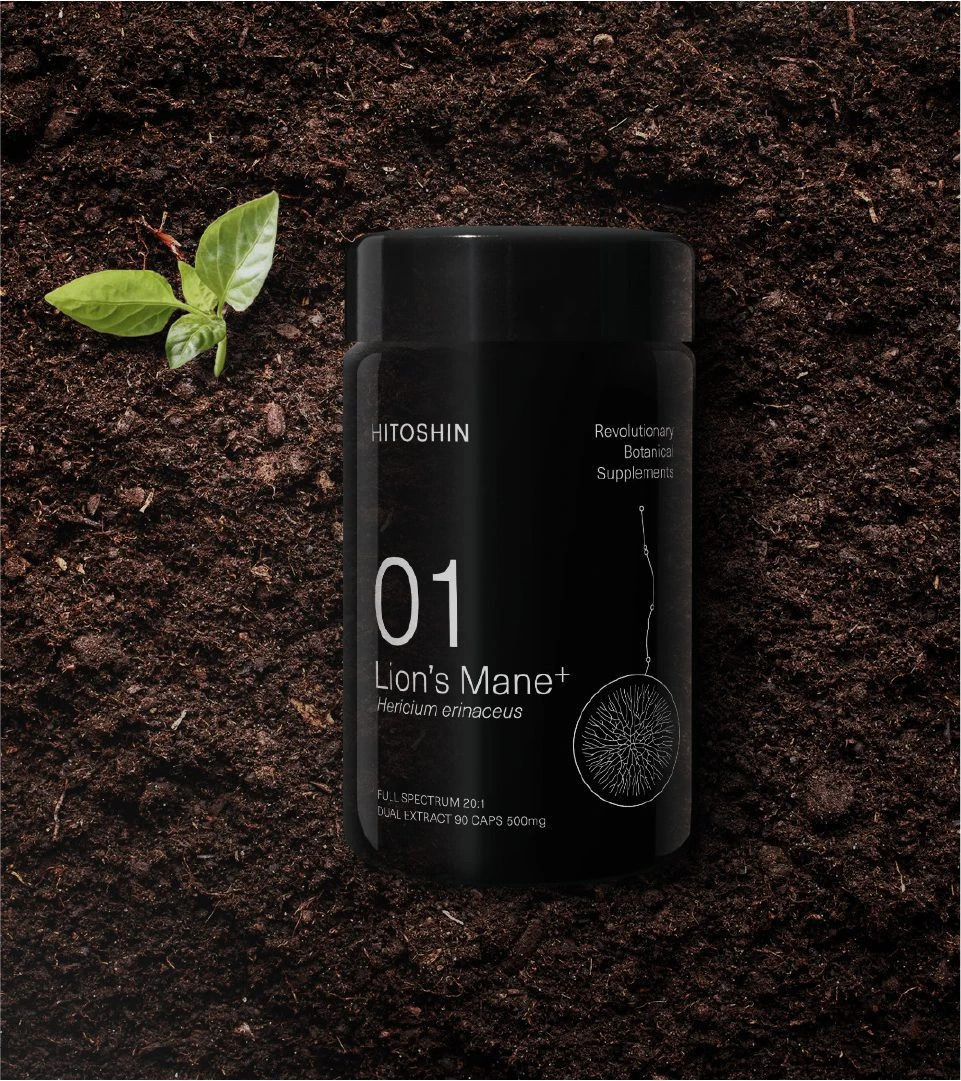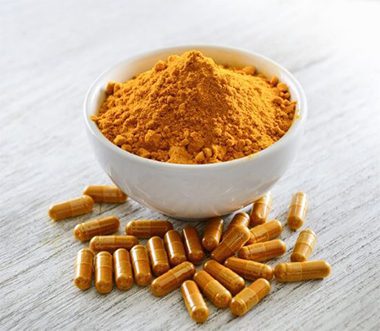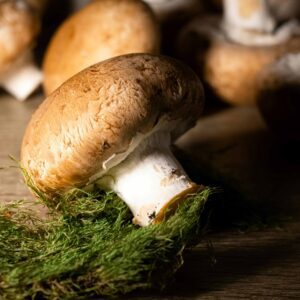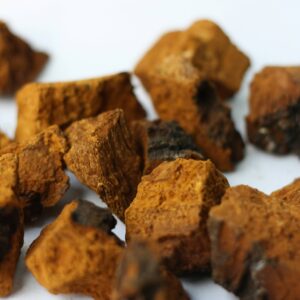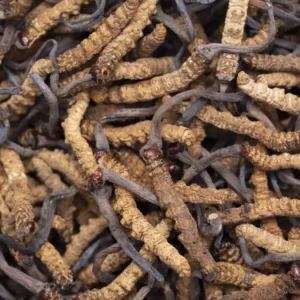
Erfahre mehr über den „König der Heilpilze“ – die nordische Bio Chaga, auch als Inonotus obliquus bekannt. Dieser parasitärer Pilz entstammt den subarktischen Birkenwäldern von Skandinavien sowie Sibirien und zieht nicht nur durch seine mystische Herkunft, sondern auch durch nachgewiesene gesundheitsfördernde Vorteile die Aufmerksamkeit auf sich.
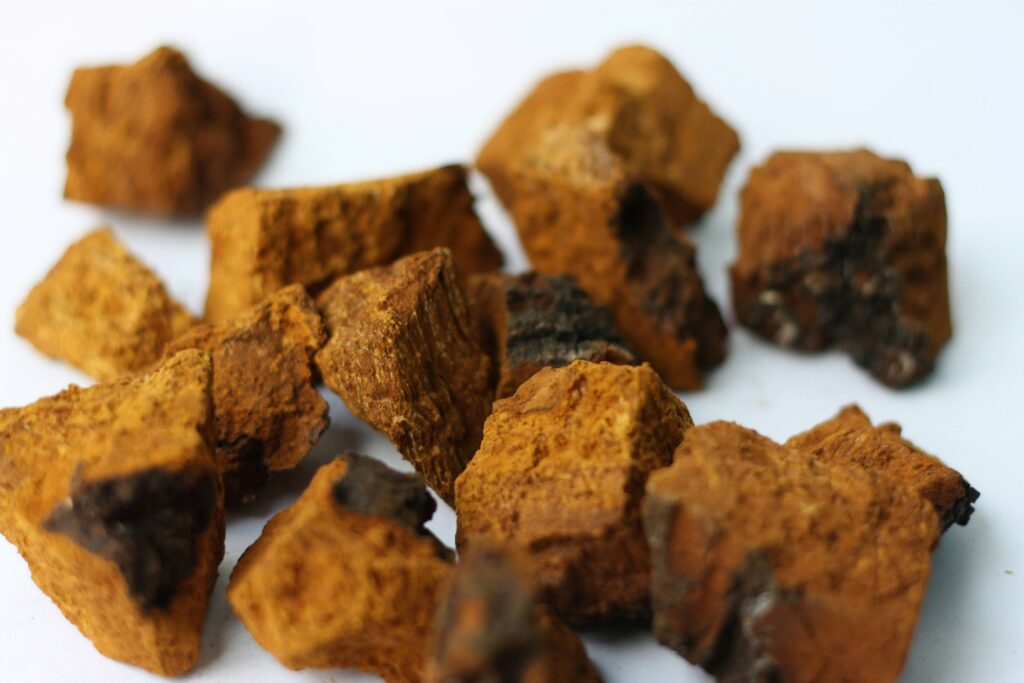
Die Chaga-Entstehungsgeschichte im Norden
Dieser Pilz wächst vorwiegend auf der Birke in den subarktischen Wäldern Skandinaviens. Die besonderen klimatischen Bedingungen, reine Luft und mineralreicher Boden schaffen ideale Wachstumsbedingungen für diesen Heilpilz. Die Authentizität und Intensität der nordischen Chaga resultieren aus den langen, kühlen Wintern und kurzen Sommern in Skandinavien, was zu einer einzigartigen Anreicherung von Nährstoffen führt.
Nordischer Chaga in der traditionellen Medizin
Mit einer langen Geschichte in der traditionellen Volksmedizin der nördlichen Regionen wird Chaga von indigenen Völkern wie den Samen und Inuit seit Generationen als Heilmittel gegen verschiedene Beschwerden eingesetzt – von der Stärkung des Immunsystems bis zur Förderung der allgemeinen Vitalität. Sie verarbeiten den Fruchtkörper schonend zu Tee, Pilzpulver und Extrakte.

Nachhaltige Erntepraktiken
Die wachsende Popularität des Chaga hat das Bewusstsein für nachhaltige Erntepraktiken geschärft. Ernter in Skandinavien setzen auf verantwortungsbewusste Methoden, um Überbeanspruchung zu vermeiden. Dies umfasst die Auswahl reifer Chaga-Stücke zur Förderung der Fortpflanzung und den Schutz natürlicher Lebensräume.
Wissenschaftliche Erkenntnisse zu Chaga und Gesundheitsaspekte
Moderne wissenschaftliche Analysen bestätigen die positiven Wirkungen von Chaga und anderen Vitalpilzen als Nahrungsergänzungsmittel auf den menschlichen Körper. Die chemische Zusammensetzung von Chaga wurde erstmals 1864 von Johann Georg Noel Dragendorff untersucht. Über 200 verschiedene bioaktive Metaboliten wurden identifiziert, darunter Polysaccharide, Melanine, Triterpene, Benzoesäurederivate und mehr.
Besonders hervorstechend sind die immunmodulatorischen, hepatoprotektiven und antioxidativen Aktivitäten der Beta-Glucane, den entscheidenden Polysacchariden im Chaga. Die einzigartigen Triterpene wie Inotodiol zeigen immunmodulatorische und antivirale Wirkungen, während Melanin antioxidative und DNA-schützende Eigenschaften aufweist.
Gesundheitliche Vorteile des Chaga
Reiche Nährstoffdichte: Chaga absorbiert Nährstoffe aus der Birkenrinde, was zu einer beeindruckenden Konzentration von Polysacchariden, Melaninen und Triterpenen führt – eine kraftvolle natürliche Heilquelle.
Stärkung des Immunsystems: Chaga unterstützt das Immunsystem mit immunstimulierenden Verbindungen, fördert die Produktion von Interferonen und stärkt die Abwehr gegen Krankheiten und Infektionen.
Adaptogene Eigenschaften: Als Adaptogen hilft Chaga dem Körper, sich an verschiedene Stressoren anzupassen, was den allgemeinen Stresslevel reduziert und das Wohlbefinden fördern kann.
Antioxidative Kraft: Mit hoher antioxidativer Aktivität neutralisiert Chaga freie Radikale, minimiert Zellschäden und verlangsamt den Alterungsprozess.
Entzündungshemmende Wirkung: Die enthaltenen Triterpene wirken entzündungshemmend und unterstützen die natürliche Bekämpfung von chronischen Entzündungen im Körper.
Verdauungsförderung: Studien zeigen gastroprotektive Eigenschaften von Chaga, die die Darmgesundheit unterstützen können.
Antivirale Eigenschaften: Insbesondere Inotodiol zeigt vielversprechende Ergebnisse gegen das humane Immundefizienzvirus (HIV-1) und das Herpes-simplex-Virus (HSV-1).
Blutzuckerspiegel-Regulierung: Tierstudien weisen auf eine antidiabetische Wirkung von Chaga hin.
Hautgesundheit: Die antioxidativen Eigenschaften von Chaga können die Haut vor vorzeitigem Altern schützen.
Leberschutz: Chaga zeigt hepatoprotektive Eigenschaften, die die Lebergesundheit unterstützen können.
Chaga Pilz Dosierung, Sicherheit und mögliche Nebenwirkungen der Vitalpilze
Erfahre mehr über die ausgewogene Dosierung von Chaga Pulver, einem hochwertigen Vitalpilz. Die Dosierung kann je nach Darreichungsform und Extraktionsmethode variieren. Beachte die Anweisungen auf dem Produktetikett, um die Vorteile des Chaga Vitalpilz in Pulverform voll auszuschöpfen. Trotz der allgemeinen Sicherheit von Chaga gibt es spezielle Überlegungen für schwangere Frauen, Menschen mit Autoimmunerkrankungen und Blutgerinnungsstörungen. Bei Unsicherheit ist es ratsam vor der Einnahme von Chaga Pilz Pulver, einen Arzt oder Naturheilpraktiker zu konsultieren, um individuelle Bedürfnisse und mögliche Risiken zu besprechen und die angegeben empfohlene Kapsel Menge zu optimieren. Stärken sie Ihre Gesundheit mit Chaga – dem nordischen Pilzwunder.

Die Mystik der Nordischen Chaga
Insgesamt fasziniert der Chaga-Pilz nicht nur durch die authentische Herkunft, sondern auch durch nachweisbare gesundheitliche Vorteile. Als Schlüsselkomponente in traditioneller Medizin und adaptogenen Nahrungsergänzungsmitteln bietet sie eine spannende Perspektive auf die Verbindung zwischen Natur und Gesundheit. Beim Kauf von Chaga ist es ratsam, Produkte von vertrauenswürdigen Quellen zu beziehen und nachhaltige Erntepraktiken zu unterstützen, um diese faszinierende Ressource zu bewahren ✓
Quellen:
Chaga Mushroom Benefits: A Science, Health, & Supplement Guide (realmushrooms.com)
Inonotus obliquus – Schiefer Schillerporling – Chaga (vitalpilzratgeber.de)
Studien:
- Géry, A., Dubreule, C., André, V., Rioult, J., Bouchart, V., Heutte, N., Eldin de Pécoulas, P., Krivomaz, T., Garon, D. 2018, ‘Chaga (Inonotus obliquus), a Future Potential Medicinal Fungus in Oncology? A Chemical Study and a Comparison of the Cytotoxicity AGainst Human Lung Adenocarcinoma Cells (A549) and Human Bronchial Epithelial Cells (BEAS-2B)’, Integrative Cancer Therapies, vol. 17, no. 3, pp. 832-43. <Chaga (Inonotus obliquus), a Future Potential Medicinal Fungus in Oncology? A Chemical Study and a Comparison of the Cytotoxicity Against Human Lung Adenocarcinoma Cells (A549) and Human Bronchial Epithelial Cells (BEAS-2B) – Antoine Géry, Christelle Dubreule, Véronique André, Jean-Philippe Rioult, Valérie Bouchart, Natacha Heutte, Philippe Eldin de Pécoulas, Tetyana Krivomaz, David Garon, 2018 (sagepub.com)>
- Khan, A.A., Gani, A., Khanday, F.A., Masoodi, F.A. 2018, ‘Biological and pharmaceutical activities of mushroom ꞵ-glucan discussed as a potential functional food ingredient’, Bioactive Carbohydrates and Dietary Fibre, vol. 16, pp. 1-13. <Biological and pharmaceutical activities of mushroom β-glucan discussed as a potential functional food ingredient – ScienceDirect>
- Revskaya, E., Chu, P., Howell, R.C., Schweitzer, A.D., Bryan, R.A., Harris, M., Gerfen, G., Jiang, Z., Jandl, T., Kim, K., Ting, L.M., Sellers, R.S., Dadachova, E., Casadevall, A. 2012, ‘Compton Scattering by Internal Shields Based on Melanin-Containing Mushrooms Provides Protection of Gastrointestinal Tract from Ionizing Radiation’, Cancer Biotherapy & Radiopharmaceuticals, vol. 27, no. 9, pp. 570-576. <Compton Scattering by Internal Shields Based on Melanin-Containing Mushrooms Provides Protection of Gastrointestinal Tract from Ionizing Radiation | Cancer Biotherapy and Radiopharmaceuticals (liebertpub.com)>
- Rogers, Robert 2011, The Fungal Pharmacy: The Complete Guide to Medicinal Mushrooms and Lichens of North America, North Atlantic Books, Berkeley, California.
- Nomura, M., Takahashi T., Uesugi, A., Tanaka, R., Kobayashi, S. 2008, ‘Inotodiol, a lanostane triterpenoid, from Inonotus obliquus inhibits cell proliferation through caspase-3-dependent apoptosis’, Anticancer Research, vol. 28, no. 5A, pp. 2691-6. <https://pubmed.ncbi.nlm.nih.gov/19035296/>
- Zhao, F.Q., Yan, L., Cui, X.H., Lin, S., Wang, C., Zhang, H., Kang, X.Y., Ji, B.S. 2012, ‘Triterpenoids from Inonotus obliquus protect mice against oxidative damage induced by CCI4’, Acta Pharmaceutica Sinica, vol. 47, no. 5, pp. 680-4. <[Triterpenoids from Inonotus obliquus protect mice against oxidative damage induced by CCl4]. – Abstract – Europe PMC>
- Park, Y.K., Lee, H.B., Jeon, E.J., Jung, H.S., Kang, M.H. 2008, ‘Chaga mushroom extract inhibits oxidative DNA damage in human lymphocytes as assessed by comet assay’, BioFactors, vol. 21, no. 1-4, pp. 109-112. <Chaga mushroom extract inhibits oxidative DNA damage in human lymphocytes as assessed by comet assay – Park – 2004 – BioFactors – Wiley Online Library>
- Nie, Y., Epperly, M., Shen, H., Greenberger, J.S. 2007, ‘Intraesophageal Administration of Manganese Superoxide Dismutase Plasmid/liposomes (MnSOD-PL) Pre-irradiation Results in Increased Engraftment of Bone Marrow Progenitors of Esophageal Stem Cells’, Proceedings of the American Society for Therapeutic Radiology and Oncology 49th Annual Meeting, vol. 69, no. 3, pp. S41-2. <Redirecting (elsevier.com)>
- Vouldoukis, I., Conti, M., Krauss, P., Kamate, C., Blazquez, S., Refit, M., Mazier, D., Calenda, A., Dugas, B. 2004, ‘Supplementation with gliadin-combined plant superoxide dismutase extract promotes antioxidant defences and protects against oxidative stress’, Phytotherapy Research, vol. 18, no. 12, pp. 957-62. <https://doi.org/10.1002/ptr.1542>
- Regnault, C., Roch-Arveiller, M., Tissot, M., Sarfati, G., Giroud, J.P., Postaire, E., Hazebroucq, G. 1995, ‘Effect of encapsulation on the anti-inflammatory properties of superoxide dismutase after oral administration’, Clinica Chimica Acta, vol. 240, no. 2, pp. 117-27. <https://doi.org/10.1016/0009-8981(95)06133-x>
- Xin, X., Qu, J., Veeraraghavan, V.P., Mohan, S.K., Gu, K. 2019, ‘Assessment of the Gastroprotective Effect of the Chaga Medicinal Mushroom, Inonotus obliquus (Agaricomycetes), Against the Gastric Mucosal Ulceration Induced by Ethanol in Experimental Rats’, International Journal of Medicinal Mushrooms, vol. 21, no. 8, pp. 805-16. <Assessment of the Gastroprotective Effect of the Chaga Medicinal Mushroom, <i>Inonotus obliquus</i> (Agaricomycetes), Against the Gastric Mucosal Ulceration Induced by Ethanol in Experimental Rats – International Journal of Medicinal Mushrooms, Volume 21, 2019, Issue 8 – Begell House Digital Library>
- Mishra, S.K., Kang, J.H., Kim, D.K., Oh, S.H., Kim, M.K. 2012, ‘Orally administered aqueous extract of Inonotus obliquus ameliorates acute inflammation in dextran sulfate sodium (DSS)-induced colitis in mice’, Journal of Ethnopharmacology, vol. 143, no. 2, pp. 524-32. <Orally administered aqueous extract of Inonotus obliquus ameliorates acute inflammation in dextran sulfate sodium (DSS)-induced colitis in mice – ScienceDirect>
- Hu, Y., Sheng, Y., Yu, M., Li, K., Ren, G., Xu, X., Qu, J. 2016, ‘Antioxidant activity of Inonotus obliquus polysaccharide and its amelioration for chronic pancreatitis in mice’, International Journal of Biological Macromolecules, vol. 87, pp. 348-56. <https://doi.org/10.1016/j.ijbiomac.2016.03.006>
- Hu, Y., Teng, C., Yu, S., Wang, X., Liang, J., Bai, X., Dong, L., Song, T., Yu, M., Qu, J. 2017, ‘Inonotus obliquus polysaccharide regulates gut microbiota of chronic pancreatitis in mice’, AMB Express, vol. 7, no. 1. <Inonotus obliquus polysaccharide regulates gut microbiota of chronic pancreatitis in mice | AMB Express | Full Text (springeropen.com)>
- Van, Q., Nayak, B.N., Reimer, M., Jones, P.J.H., Fulcher, R.G., Rempel, C.B. 2009, ‘Anti-inflammatory effect of Inonotus obliquus, Polygala senega L., and Viburnum trilobum in a cell screening assay’, Journal of Ethnopharmacology, vol. 125, no. 3, pp. 487-493. <https://doi.org/10.1016/j.jep.2009.06.026>
- Park, Y.M., Won, J.H., Kim, Y.H., Choi, J.W., Park, H.J., Lee, K.T. 2005, ‘In vivo and in vitro anti-inflammatory and anti-nociceptive effects of the methanol extract of Inonotus obliquus’, Journal of Ethnopharmacology, vol. 101, no. 1-3, pp. 120-8. <In vivo and in vitro anti-inflammatory and anti-nociceptive effects of the methanol extract of Inonotus obliquus – ScienceDirect>
- Liao, L.Y., He, Y.F., Li, L., Meng, H., Dong, Y.M., Yi, F., Xiao, P.G. 2018, ‘A preliminary review of studies on adaptogens: comparison of their bioactivity in TCM with that of ginseng-like herbs used worldwide’, Chinese Medicine, vol., 13, no. 57, <A preliminary review of studies on adaptogens: comparison of their bioactivity in TCM with that of ginseng-like herbs used worldwide | Chinese Medicine | Full Text (biomedcentral.com)>
- Nguyet, T.M.N., Lomunova, M., Le, B.V., Lee, J.S., Park, S.K., Kang, J.S., Kim, Y.H., Hwang, I. 2018, ‘The mast cell stabilizing activity of Chaga mushroom critical for its therapeutic effect on food allergy is derived from inotodiol’, International Immunopharmacology, vol. 54, pp. 286-95. <The mast cell stabilizing activity of Chaga mushroom critical for its therapeutic effect on food allergy is derived from inotodiol – ScienceDirect>
- Ko, S.K., Jin, M., Pyo, M.Y. 2011, ‘Inonotus obliquus extracts suppress antigen-specific IgE production through the modulation of Th1/Th2 cytokines in ovalbumin-sensitized mice’, Journal of Ethnopharmacology, vol. 137, no. 3, pp. 1077-82. <https://doi.org/10.1016/j.jep.2011.07.024>
- Yoon, T.J., Lee, S.J., Kim, E.Y., Cho, E.H., Kang, T.B., Yu, K.W., Suh, H.J. 2013, ‘Inhibitory effect of chaga mushroom extract on compound 48/80-induced anaphylactic shock and IgE production in mice’, International Immunopharmacology, vol. 15, no. 4, pp. 666-70. <Inhibitory effect of chaga mushroom extract on compound 48/80-induced anaphylactic shock and IgE production in mice – ScienceDirect>
- Youn, M.J., Kim, J.K., Park, S.Y., Kim, Y., Park, C., Kim, E.S., Park, K.I., So, H.S., Park, R. 2009, ‘Potential anticancer properties of the water extract of Inonotus obliquus by induction of apoptosis in melanoma B16-F10 cells’, Journal of Ethnopharmacology, vol. 121, no. 2, pp. 221-8. <https://doi.org/10.1016/j.jep.2008.10.016>
- Youn, M.J., Kim, J.K., Park, S.Y., Kim, Y., Kim, S.J., Lee, J.S., Chai, K.Y., Kim, H.J., Cui, M.X., So, H.S., Kim, K.Y., Park, R. 2008, ‘Chaga mushroom (Inonotus obliquus) induces G0/G1 arrest and apoptosis in human hepatoma HepG2 cells, World Journal of Gastroenterology, vol. 14, no. 4, pp. 511-7. <Chaga mushroom (Inonotus obliquus) induces G0/G1 arrest and apoptosis in human hepatoma HepG2 cells (wjgnet.com)>
- Mayo Clinic 2020, Type 2 Diabetes, viewed 6 September 2020, <Type 2 diabetes – Symptoms and causes – Mayo Clinic>
- Diao, B.Z., Jin, W.R., Yu, X.J. 2014, ‘Protective Effect of Polysaccharides from Inonotus obliquus on Streptozotocin-Induced Diabetic Symptoms and Their Potential Mechanisms in Rats’, Evidence-Based Complementary and Alternative Medicine, vol. 2014. <Protective Effect of Polysaccharides from Inonotus obliquus on Streptozotocin-Induced Diabetic Symptoms and Their Potential Mechanisms in Rats (hindawi.com)>
- Chen, H., Lu, X., Qu, Z., Wang, Z., Zhang, L. 2010, ‘Glycosidase inhibitory activity and antioxidant properties of a polysaccharide from the mushroom Inonotus obliquus’, Journal of Food Biochemistry, vol. 34, no. s1, pp. 178-91. <GLYCOSIDASE INHIBITORY ACTIVITY AND ANTIOXIDANT PROPERTIES OF A POLYSACCHARIDE FROM THE MUSHROOM INONOTUS OBLIQUUS – CHEN – 2010 – Journal of Food Biochemistry – Wiley Online Library>
- Sun, J.E., Ao, Z.H., Lu, Z.M., Xu, H.Y., Zhang, X.M., Dou, W.F., Xu, Z.H. 2008, ‘Antihyperglycemic and antilipidperoxidative effects of dry matter of culture broth of Inonotus obliquus in submerged culture of normal and alloxan-diabetes mice’, Journal of Ethnopharmacology, vol. 118, no. 1, pp. 7-13. <Antihyperglycemic and antilipidperoxidative effects of dry matter of culture broth of Inonotus obliquus in submerged culture on normal and alloxan-diabetes mice – ScienceDirect>
- Xu, H.Y., Sun, J.E., Lu, Z.M., Zhang, X.M., Dou, W.F., Xu, Z.H. 2010, ‘Beneficial effects of the ethanol extract from the dry matter of a culture broth of Inonotus obliquus in submerged culture on the antioxidant defence system and regeneration of pancreatic ꞵ-cells in experimental diabetes in mice’, Natural Product Research, vol. 24, no. 6. <Beneficial effects of the ethanol extract from the dry matter of a culture broth of Inonotus obliquus in submerged culture on the antioxidant defence system and regeneration of pancreatic β-cells in experimental diabetes in mice: Natural Product Research: Vol 24 , No 6 – Get Access (tandfonline.com)>
- Ambardekar, N. 2019, Alpha-Glucosidase Inhibitors for Diabetes, viewed 6 September 2020, <What Are Alpha-Glucosidase Inhibitors for Diabetes? (webmd.com)>
- Zhong, Y., Zhong, X., Yang, S., Zheng, Z. 2015, ‘Effect of Inonotus obliquus Polysaccharides on physical fatigue in mice’, Journal of Traditional Chinese Medicine, vol. 35, no. 4, pp. 468-72. <Effect of Inonotus Obliquus Polysaccharides on physical fatigue in mice – ScienceDirect>
- Shibnev, V.A., Mishin, D.V., Garaev, T.M., Finogenova, N.P., Botikov, A.G., Deryabin, P.G. 2011, ‘Antiviral Activity of Inonotus obliquus Fungus Extract towards Infection Caused by Hepatitis C Virus in Cell Cultures’, Bulletin of Experimental Biology and Medicine, vol. 151, no. 5, pp. 612-4. <Antiviral Activity of Inonotus Obliquus Fungus Extract towards Infection Caused by Hepatitis C Virus in Cell Cultures | Bulletin of Experimental Biology and Medicine (springer.com)>
- Zheng, W., Miao, K., Liu, Y., Zhao, Y., Zhang, M., Pan, S., Dai, Y. 2010, ‘Chemical diversity of biologically active metabolites in the sclerotia of Inonotus obliquus and submerged culture strategies for up-regulating their production’, Applied Microbiology and Biotechnology, vol. 87. <Antiviral Activity of Inonotus Obliquus Fungus Extract towards Infection Caused by Hepatitis C Virus in Cell Cultures | Bulletin of Experimental Biology and Medicine (springer.com)>
- Ichimura, T., Watanabe, O., Maruyama, S. 2014, ‘Inhibition of HIV-1 Protease by Water-Soluble Lignin-Like Substance from an Edible Mushroom, Fuscoporia obliqua’, Bioscience, Biotechnology, and Biochemistry, vol. 62, no. 3, pp. 575-77. <Inhibition of HIV-1 Protease by Water-Soluble Lignin-Like Substance from an Edible Mushroom, Fuscoporia obliqua | Bioscience, Biotechnology, and Biochemistry | Oxford Academic (oup.com)>
- Shibnev, V.A., Garaev, T.M., Finogenova, M.P., Kalnina, L.B., Nosik D.N. 2015, ‘Antiviral activity of aqueous extracts of the birch fungus Inonotus obliquus on the human immunodeficiency virus’, Voprosy Virusologii, vol. 60, no. 2, pp. 35-8. <[Antiviral activity of aqueous extracts of the birch fungus Inonotus obliquus on the human immunodeficiency virus] – PubMed (nih.gov)>
- Aiken, C., Chen, C.H. 2005, ‘Betulinic acid derivatives as HIV-1 antivirals’, Trends in Molecular Medicine, vol. 11, no. 1, pp. 31-6. <Redirecting (elsevier.com)>
- Tian, J., Hu, X., Liu, D., Wu, H., Qu, L. 2017, ‘Identification of Inonotus obliquus polysaccharide with broad-spectrum antiviral activity against multi-feline viruses’, International Journal of Biological Macromolecules, vol. 95, pp. 160-7. <Identification of Inonotus obliquus polysaccharide with broad-spectrum antiviral activity against multi-feline viruses – ScienceDirect>
- Huang, S., Pan, Y., Gan, D., Ouyang, X., Tang, S., Ekunwe, S.I.N., Wang, H. 2010, ‘Antioxidant activities and UV-protective properties of melanin from the berry of Cinnamomum burmannii and Osmanthus fragrans’, Medicinal Chemistry Research, vol. 20, pp. 475-81. <Antioxidant activities and UV-protective properties of melanin from the berry of Cinnamomum burmannii and Osmanthus fragrans | Medicinal Chemistry Research (springer.com)>
- Park, J. R., Park, J. S., Jo, E. H., Hwang, J. W., Kim, S. J., Ra, J. C., Aruoma, O. I., Lee, Y. S., & Kang, K. S. (2006). Reversal of the TPA-induced inhibition of gap junctional intercellular communication by Chaga mushroom (Inonotus obliquus) extracts: effects on MAP kinases. BioFactors (Oxford, England), 27(1-4), 147–155. Reversal of the TPA‐induced inhibition of gap junctional intercellular communication by Chaga mushroom (Inonotus obliquus) extracts: Effects on MAP kinases – Park – 2006 – BioFactors – Wiley Online Library
- Giridharan, V.V., Thandavarayan, R.A., Konishi, T. 2011, ‘Amelioration of scopolamine induced cognitive dysfunction and oxidative stress by Inonotus obliquus – a medicinal mushroom’, Food & Function, vol. 2, no. 6, pp. 320-7. <Amelioration of scopolamine induced cognitive dysfunction and oxidative stress by Inonotus obliquus – a medicinal mushroom – Food & Function (RSC Publishing)>
- Arata, S., Watanabe, J., Maeda, M., Yamamoto, M., Matsuhashi, H., Mochizuki, M., Kagami, N., Honda, K., Inagaki, M. 2016, ‘Continuous intake of the Chaga mushroom (Inonotus obliquus) aqueous extract suppresses cancer progression and maintains body temperature in mice’, Heliyon, vol. 2, no. 5, pp. E00111. <https://dx.doi.org/10.1016%2Fj.heliyon.2016.e00111>
- Kikuchi, Y., Seta, K., Ogawa, Y., Takayama, T., Nagata, M., Taguchi, T., Yahata, K. 2014, ‘Chaga mushroom-induced oxalate nephropathy’, Clinical Nephrology, vol. 81, no. 6, pp. 440-4. <Dustri Online Services>
- Kikuchi, Y., Seta, K., Ogawa, Y., Takayama, T., Nagata, M., Taguchi, T., & Yahata, K. (2014). Chaga mushroom-induced oxalate nephropathy. Clinical nephrology, 81(6), 440–444. Dustri Online Services
- Jarosz-Wilkolazka, A., & Gadd, G. M. (2003). Oxalate production by wood-rotting fungi growing in toxic metal-amended medium. Chemosphere, 52(3), 541–547. Oxalate production by wood-rotting fungi growing in toxic metal-amended medium – ScienceDirect
- Zheng, W.F., Liu, T., Xiang, X.Y., Gu, Q. 2007, ‘Sterol composition in field-grown and cultured mycelia of Inonotus obliquus’, Yao Xue Xue Bao, vol. 42, no. 7, pp. 750-6. <https://pubmed.ncbi.nlm.nih.gov/17882960/>

